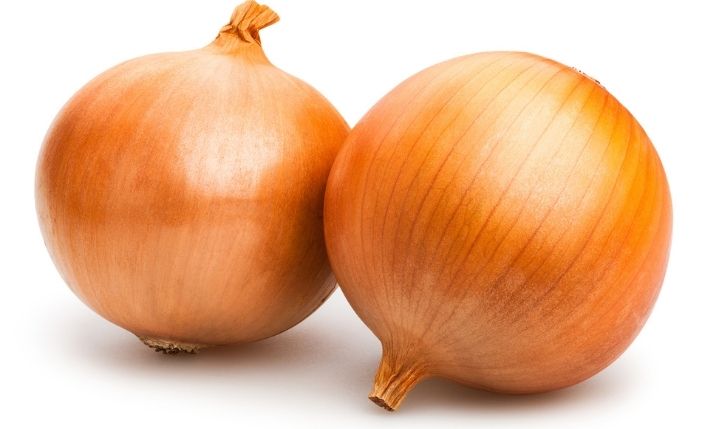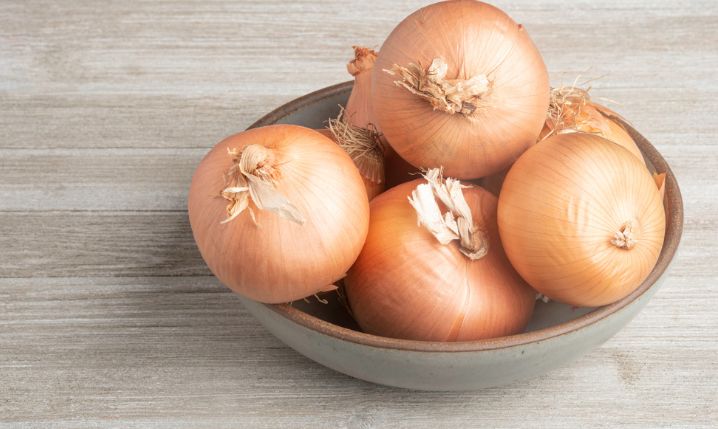Sometimes it’s important to know the differences between one onion and another. With so many varieties and types of onions available, you should know how to use them and when to use them. In this article, we’ll look at the differences between the Spanish onion vs. sweet onion.
Contents:
What Are Spanish Onions?

Spanish Onions are a mild-sweet onion and a type of yellow onion. They are medium-large in size, with brown skins. They’re known to not be as strong tasting as other types of yellow onions.
They are grown in more shallow soil, giving them a higher water content which is why they’re renowned for a crunchier texture than some other onions. This fact is why they’re recommended for salads and other dishes that require raw onions.
You can use them for salads, relishes, salsas, garnishes, and even as toppings for pizzas and other foods you can cook under a grill.
What Are Sweet Onions?

Sweet Onions are a variety of onion that is named aptly because of their notorious sweetness, at least compared to other onions.
Unlike many onions, the sweet onion is grown in more shallow soil, almost always soil with less sulfur contents, which is why they’re less pungent and acidic than other onion varieties.
Some common varieties of sweet onion include:
- Vidalia Onions
- Maui Onions
- Texas Sweet Onions
- Walla Walla Onions
You should most often use these light and refreshing onions in salads and garnishes. They also work well in salsas, relishes, and as general toppings for foods like pizzas.
They’re not nearly as aromatic as some onion varieties but can still be used for caramelizing. It’s generally advisable to use a different variety of onion for slow-cooking, such as in soups, stews, and so on.
What’s The Difference Between Spanish Onions and Sweet Onions?
| Spanish Onion | Sweet Onion |
|---|---|
| A type of yellow onion. | A variety of onion. |
| Best for salads, garnishes, relishes, pizzas, and similar. | Best for salads, garnishes, relishes, pizzas, and similar. |
| Tastes mild to sweet. | Tastes mild and sweet. |
| Medium to large in size with brown skins. | Size and shape vary, with colors that differ from brown, to white, to pale yellow. |
As you now know, these two onions are not the same. However, they share such similar characteristics that they make excellent substitutes for one another. There are many sweet onions that are actually varieties of yellow onion, which helps to explain this.
- Size: Both the Spanish and sweet onion are around the same size, ranging between medium-large.
- Appearance: Most Spanish onions are round, large bulbs that look how you’d expect an onion to look. However, not all sweet onions are uniformly spherical.
- Taste and texture: In terms of texture, these onions are relatively similar as they’re grown in shallow soils, which affects the water content. Higher water contents equal more crunch. However, sweet onions are a bit sweeter than Spanish onions. So that’s one big difference.
- Culinary uses: These onions are used for similar purposes in both cases. They are both loved for dishes that require raw onions, and that’s the best way to use them. This means you can use them as substitutes for one another without sacrificing anything but a little sweetness either way.
Conclusion
The biggest difference between these two onions is that one is a type, and the other is a variety. They are both best used for the same general purposes, but the Spanish onion is less sweet than many sweet onions. This is because, despite them both being grown in shallower soil, the Spanish onion is still grown in more sulfur-rich soils.